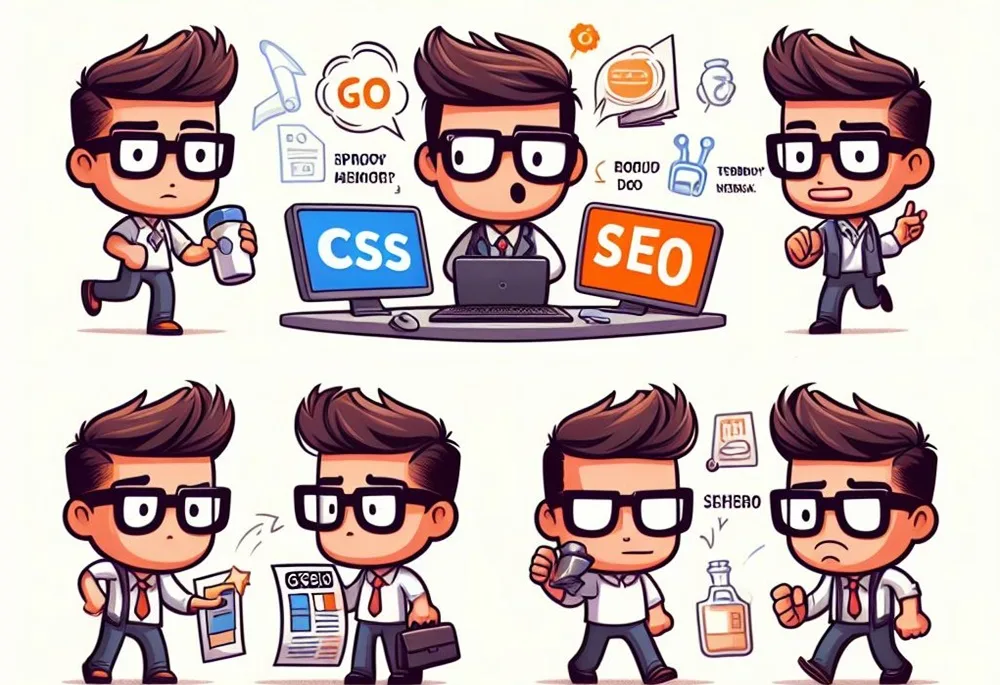SEO and UX: The Full Guide

SEO and User Experience (UX) are two critical components that ultimately dictate the success of any digital platform.
SEO focuses on enhancing a website’s visibility and ranking on search engine results, a factor that directly impacts the volume of organic traffic a site receives.
On the other hand, UX is all about the user – it’s about creating intuitive, meaningful, and pleasant interactions for the user, ensuring their journey on your site is as seamless as possible.
Remember: SEO and UX share a common goal: to provide the user with the best possible experience.
This blog post will explore the relations between SEO and UX, and provide some tips on how to optimize them both for maximum effectiveness.
Table of Contents
What is User Experience (UX)?

User Experience (UX) refers to the overall experience that a user has when interacting with a product, service, or system.
It encompasses every aspect of the user’s interaction, including their perceptions, emotions, preferences, and behaviors.
The goal of UX design is to create products or services that are useful, easy to use, and enjoyable for the users.
Key Elements of UX Include
Usability
A product or system should be easy to use and navigate. Users should be able to accomplish their tasks efficiently without unnecessary complexity.
Accessibility
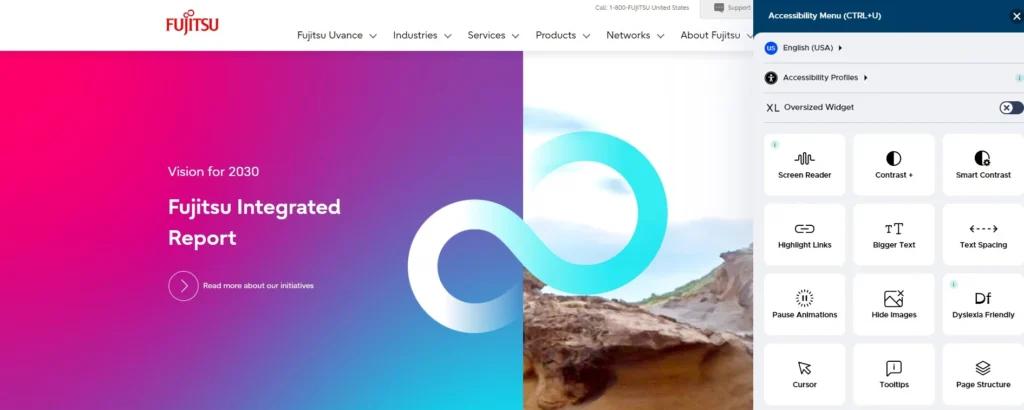
Ensuring that the product is accessible to users with different abilities and disabilities. This includes considerations for those with visual, auditory, motor, or cognitive impairments.
Nowadays accessibility is becoming an SEO factor, as search engines value websites that prioritize accessibility.
Design Aesthetics
The visual design and presentation of the product should be aesthetically pleasing and aligned with the brand identity. Clean and visually appealing interfaces contribute to a positive user experience.
Functionality
The product should perform the functions that users expect. Features should be intuitive, and the overall functionality should align with user needs and goals.
Information Architecture
Organizing and structuring information in a way that makes sense to users. This involves creating a clear hierarchy of information and logical navigation paths.
Performance
The speed and responsiveness of the product can significantly impact the user experience. Users expect fast loading times and smooth interactions.
Consistency
Maintaining consistent design and interaction patterns throughout the product enhances predictability and reduces cognitive load for users.
Feedback and Response
Providing users with feedback on their actions and the status of the system helps to keep them informed and in control.
This includes error messages, success notifications, and other forms of feedback.
User Empathy
Understanding the needs, goals, and pain points of the users. Empathizing with users helps designers create solutions that truly address their requirements and preferences.
User Research
Conducting research to gather insights into user behaviors, preferences, and expectations. This can involve surveys, interviews, usability testing, and other methods.
UX design is an iterative process that involves understanding users, creating and testing design solutions, and refining those solutions based on feedback.
It is a critical aspect of product development, as a positive user experience can lead to increased user satisfaction, loyalty, and positive word-of-mouth recommendations.
Want More Traffic?
How User Experience Affects SEO
As SEO’s holistic approach continues to evolve, user experience has become an essential factor in determining a website’s search engine ranking.
Search engines aim to provide the best possible results for users’ queries, and a good user experience is an indicator of high-quality content.
Some aspects of user experience that can impact SEO include:
Page Speed
Page speed is a crucial factor in both user experience and SEO. A slow-loading website can frustrate users and lead to high bounce rates, which negatively impacts SEO.
Therefore, it is essential to optimize page speed by reducing image sizes, minimizing code, and utilizing caching.
Mobile Friendliness

With the increasing use of mobile devices, having a mobile-friendly website is crucial for both user experience and SEO.
A responsive design that provides a seamless experience across different devices can improve user satisfaction and increase the likelihood of them staying on your site.
Easy Navigation

A well-organized website with intuitive navigation makes it easier for users to find the information they are looking for.
This not only enhances user experience but also helps search engines understand and index your website better.
Content Relevance
User experience and SEO go hand in hand when it comes to content relevance.
Search engines prioritize websites with high-quality, relevant content that provides value to users.
By creating user-centered content, you can improve both user experience and search engine rankings.
Technical Optimization
The technical aspects of your website, such as broken links, and 404 pages, can negatively impact user experience and SEO.
Regularly checking and fixing these SEO issues can improve the overall performance of your website.
User Engagement
Key user engagement metrics, including time spent on the site, pages visited per session, and engagement rate, serve as vital indicators of user experience.
These metrics are of utmost importance to SEO agencies and marketing teams as they align with their primary objectives.
Analyzing these metrics one can pinpoint areas that require improvement, thereby enhancing user experience and ultimately boosting search engine rankings.
Site Security
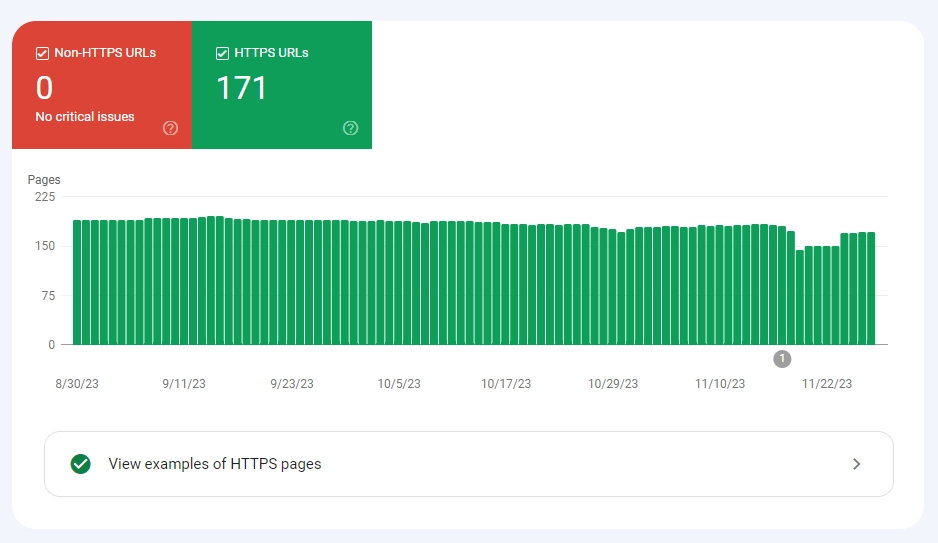
A secure website not only protects user information but also impacts SEO.
Search engines prioritize websites with SSL certificates, HTTPS protocols, and other security measures as they provide a safer browsing experience for users.
Use the Google search console HTTPS reports to see which pages have security issues and fix them as soon as possible.
Avoiding Black Hat Techniques
While tactics like cloaking and keyword stuffing may provide short-term gains in SEO, they ultimately harm user experience and lead to penalties from search engines.
It is essential to focus on creating quality content rather than resorting to unethical practices.
SEO and UX Design: Finding the Balance
As discussed, both SEO and user experience are crucial for the success of a website. However, finding the right balance between the two can be challenging.
On one hand, focusing solely on SEO tactics can lead to a poor user experience, making it difficult for users to navigate and engage with your site.
On the other hand, prioritizing UX design over SEO can result in a visually appealing website that fails to attract organic traffic.
To achieve the best results, it is essential to integrate both SEO and UX design strategies into your website.
This means creating high-quality content that is relevant to users while also optimizing technical aspects for search engine visibility.
SEO is not about doing what search engines want, but rather understanding the intent and needs of users.
User experience design, on the other hand, focuses on creating a seamless and enjoyable interaction for users but sometimes can clash with SEO requirements.
A good example is websites that are built with JS frameworks like Angular or React.
While these frameworks provide a better user experience, they can also hinder search engine bots from crawling and indexing the site’s content.
Same with websites that contain too many images or videos that make the site heavy and slow to load.
Tips for Balancing SEO and UX Design
- Don’t overuse animations or heavy graphics, as it can slow down page loading times and affect SEO.
- Optimize website navigation to make it easy for users to find what they are looking for quickly.
- Use responsive design to ensure your site is optimized for all devices, including mobile.
- Use friendly fonts and colors to make your content easy to read and visually appealing.
- Incorporate keywords in a natural and relevant way throughout your website’s content, but avoid keyword stuffing.
- For blog posts – Use screenshots, videos, and other visual aids to break up the text and make it more engaging for users.
- Use short paragraphs, bullet points, and headings to make your content scannable for users.
SEO and UX Best Practices
Optimize for Mobile
With the rise in mobile usage, having a responsive and mobile-friendly website is crucial for both SEO and user experience.
Make sure your site is optimized for different devices and screen sizes.
Perform AB Testing
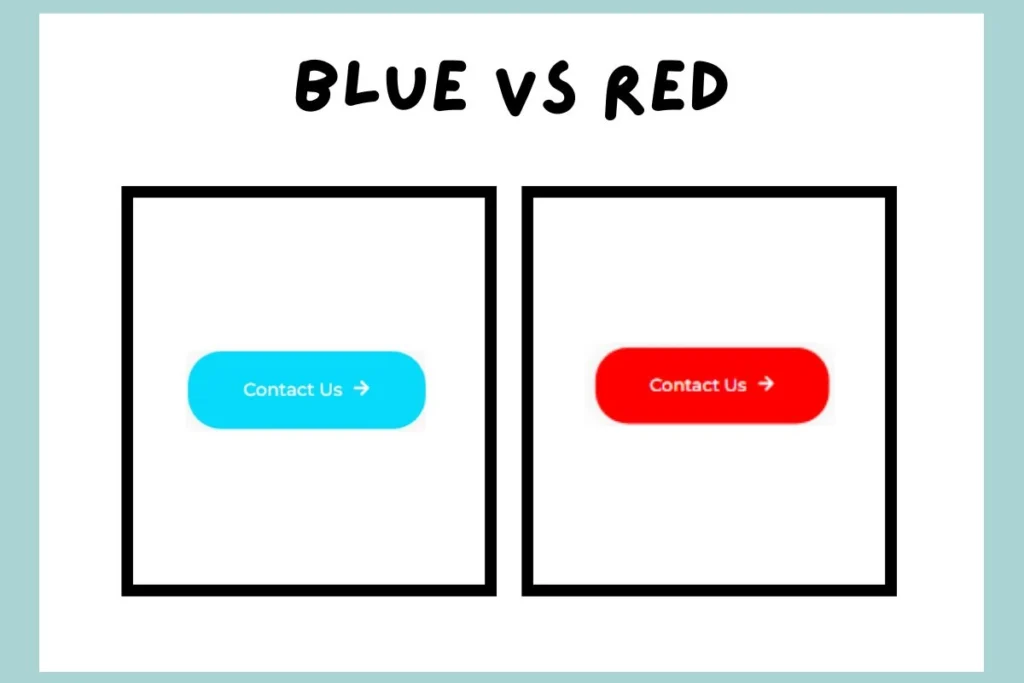
Use data to make informed decisions about your website’s design and functionality.
Conduct AB testing to see how different designs or layouts affect user engagement and conversions.
Use Lightweight Files and Images
Heavy files and images can slow down your website’s loading speed, which not only affects user experience but also negatively impacts SEO.
Use formats like WebP or AVIF for images and minify CSS, HTML, and JavaScript files to improve site speed.
Embed Videos Correctly
Videos are a great way to engage users, but they can also hinder SEO if not implemented correctly.
Don’t save the video on your server/CMS; instead, use platforms like YouTube or Vimeo and embed them on your site. That way it won’t slow down your site’s loading speed.
Add Breadcrumbs
Breadcrumbs not only make it easier for users to navigate your site, but they also help search engines understand the site’s structure and hierarchy. This can improve SEO and user experience simultaneously.
JavaScript Website? Use Server-Side Rendering
If your website is built mainly with JavaScript, using server-side rendering can help improve SEO by allowing search engines to crawl and index the site’s content.
Ensure Proper Internal Linking
To improve the user experience and help search engines understand the structure of your site, make sure to include internal links within your content.
This helps users easily navigate to related pages and also distributes link equity throughout the site, which can improve SEO.
Keep an Eye on Crawl Errors
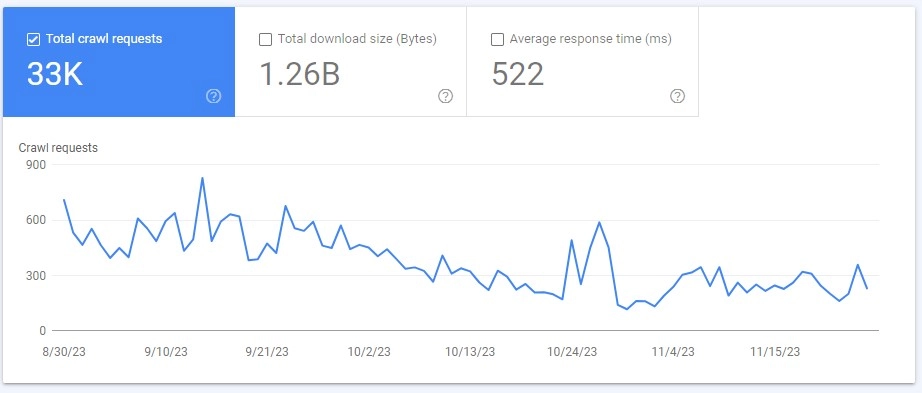
Regularly check for crawl errors in Google Search Console and fix them as soon as possible.
These can negatively affect your site’s ranking, so it’s essential to address them promptly.
Check for Hosting Issues
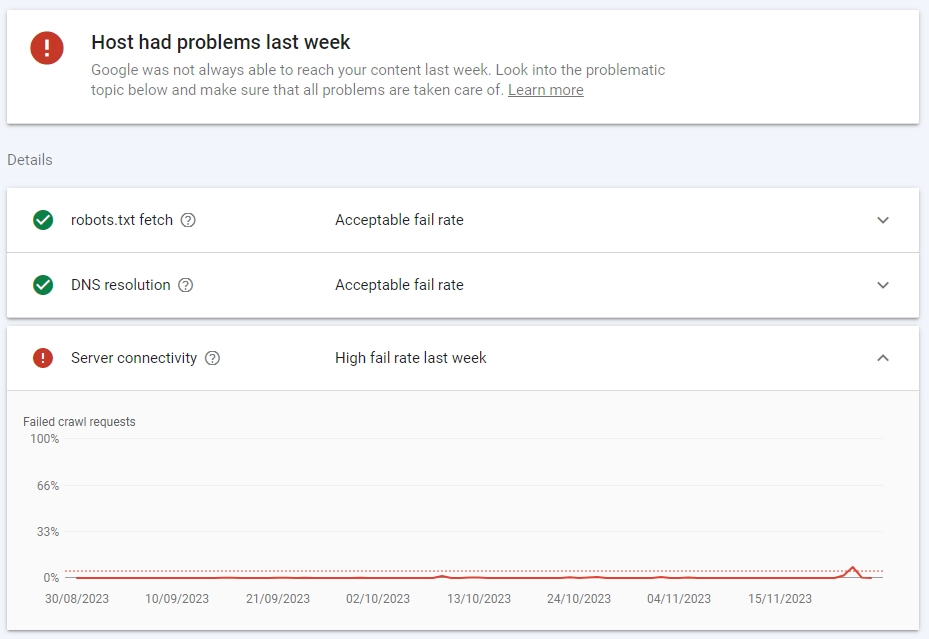
If your website is experiencing frequent downtime or slow loading speeds, it could be due to hosting issues.
Remember – slow loading speeds = bad user experience = bad SEO. Consider switching to a more reliable hosting provider to ensure your site is always accessible and fast.
Use Alt Tags and Captions for Images
Alt tags and captions provide alternative text for images, making them accessible to visually impaired users.
They also help search engines understand the content of your images, which can improve SEO.
Localize your content
If your website caters to a specific geographic location, consider localizing your content with relevant keywords and location-specific information.
For example, a US-based company will target American English speakers, and in case of targeting other English-speaking countries (UK/CA/AU), the content should be localized accordingly, which will eventually improve UX.
Use Semantic Terms
When creating content, consider using semantic terms and related keywords rather than just repeating the same keyword over and over again.
The semantic SEO approach not only helps your content rank for a broader range of search queries but also makes it more natural and engaging for readers.
Use New CMS Systems
If your current CMS is outdated or not user-friendly, consider switching to a newer and more efficient system.
Using top-notch technologies like headless CMS, static site generators, and taking advantage of HTML5 can significantly improve your website’s performance and make it easier to manage and update, but also requires a deeper understanding of SEO and web development.
Which SEO Factor is Affected by Bad UX?
SEO is affected by bad UX in multiple ways. Some of the key factors impacted include:
- Engagement rate (Bounce rate): If users have a poor experience on your site, they are more likely to leave quickly without exploring further. This results in a high bounce rate, which can negatively impact your SEO ranking.
- Dwell time: Dwell time refers to how long a user spends on your site before returning to the search results. If users are not finding what they need on your website, they will leave quickly, resulting in a shorter dwell time. This can be seen as a signal that your website is not providing valuable content, which can affect SEO ranking.
- CTR (Click-through rate): Basically, UX starts from the SERP itself and not after the user lands on your website. Poor meta titles and descriptions, low-quality images, irrelevant content, and lack of use reach results (when possible) can all contribute to a low CTR, which affects your website’s overall SEO performance.
- User-generated content: Reviews, comments, and other forms of user-generated content play an essential role in SEO ranking. If users have a negative experience on your site, they are more likely to leave negative reviews and comments, which can harm your website’s reputation and ultimately affect its SEO ranking.
- Backlinks: Bad UX can also lead to fewer backlinks from other websites. This is because other sites are less likely to link to a site that provides a poor user experience, resulting in lower domain authority and ultimately affecting SEO ranking.
- Conversions: If your website has a high bounce rate and low dwell time, it can also negatively impact conversions. Poor user experience often leads to a lack of trust in the website and business, resulting in fewer conversions.
- Mobile-friendliness: With the majority of web traffic coming from mobile devices, having a bad user experience on mobile can significantly impact SEO ranking. This includes issues such as slow loading times, difficult navigation, and non-responsive design.
- Social media shares: A good user experience can lead to more social media shares, which can indirectly impact SEO ranking. When users have a positive experience on your site, they are more likely to share it with their friends and followers, increasing brand awareness and potentially driving more traffic to your website.
How Does SEO Help in User Experience?
The assumption is that UX helps to improve the SEO perception, but the opposite is also true.
Good SEO practices can have a positive impact on user experience as well.
Numerous in-house SEO professionals who work internally claim that their company’s UX team collaborates closely with the SEO team.
This close collaboration aims to enhance the user experience, with the SEO team often providing valuable insights and suggestions to the UX team.
Some ways in which SEO can contribute to a better user experience are:
Keep Your Content Fresh
Fresh and updated content, a key aspect of SEO, can also keep users returning to your site for new and valuable information.
Add a Search Bar

Adding a search bar on your website can make it easier for users to find the content they are looking for quickly.
This can improve their overall experience and keep them from getting frustrated and leaving the site.
A good example is github.com, which has a search bar at the top of its homepage.
Use Focused Titles and Headlines
Focused titles and headlines help users quickly understand the content of your page, reducing confusion and improving navigation.
Avoid Long Paragraphs
Long paragraphs can be overwhelming and difficult to read, especially on mobile devices.
Breaking up content into shorter paragraphs and using headings can make it more readable for users.
Split Long Articles into Multiple Pages
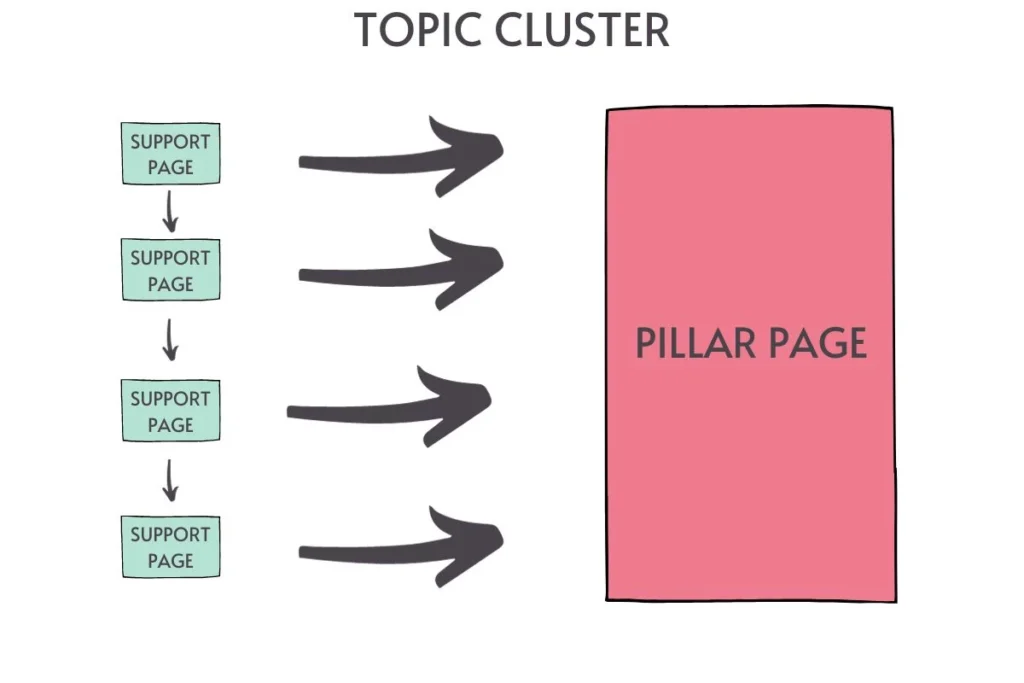
Long articles can be intimidating for users to read, causing them to abandon your page.
By splitting long articles into multiple pages, you make it easier for users to digest the content and stay engaged.
Give Users the Answer They’re Looking For
With the rise of voice search, users are looking for quick and direct answers to their queries.
Don’t make users search too hard for the information they need, provide them with the answer right away to improve their experience.
Conclusion
In conclusion, the collaboration between SEO and UX teams is crucial for creating a positive user experience.
By implementing SEO strategies, the UX team can improve the overall functionality and usability of a website, making it easier for users to find what they are looking for.
In turn, a better user experience can also positively impact search engine rankings and drive more traffic to your website.
Remember to always keep the user in mind and continuously improve and adapt your website to provide the best experience possible.
At B.H digital marketing agency we are dedicated to optimizing your website for both search engines and users, contact us today to learn more about our services.

Moshe Ben Haim
Moshe Ben Haim is an SEO expert and the founder and CEO of B.H Digital.
With over 7 years of experience in the field, Moshe has helped countless clients increase their visibility and reach potential customers online.
Before founding B.H Digital, Moshe worked as an SEO specialist at top-notch companies like Wix, 888 Holdings and Verbit.


